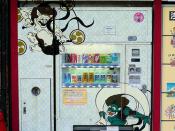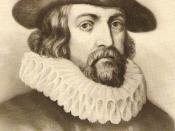For millennia, men have struggled with the basic problems of life. Food, water, and shelter were daily struggles. But a deeper problem was always present, sometimes ignored or dismissed, but always there. Who am I, and where am I? The answers were easily accessible to all, in the revelation from God that is found in the Bible. But the artists of the time refused to accept that answer. They turned to themselves or other things for the answers, and found none. And so, the questions festered in people's hearts, and over time, it was noticed. It became all too apparent over the course of the last few centuries, with art becoming meaningless and increasingly horrific.
The essence of the modern movement is hard to pinpoint, exactly, because modern art covers such a wide range of subject matter. From the random paint drippings of Jackson Pollock to Francis Bacon's reinterpretation of Pope Innocent X to Edward Paolozzi's Paris Bird made from nothing but objects found in the local dump, nothing was forbidden.
But at the heart of every piece of art, behind the junk and splatters, there were those questions, questions which were tearing at the mind of the artist, questions which they refused to see the answer to. Their art had no meaning, but the driving force behind it was those terrible, unanswerable questions. The artists could not find truth, rather, they didn't want to find the real truth, so they searched for alternatives, and came up blank. They did not want to give their lives to God, and therefore they gave themselves to hopelessness, meaningless, and ultimately, death. These feelings are embodied in Francis Bacon's painting, Head IV. It is a scream, a scream against that aching hole, the overwhelming feeling of insignificance. The dark background gives...


